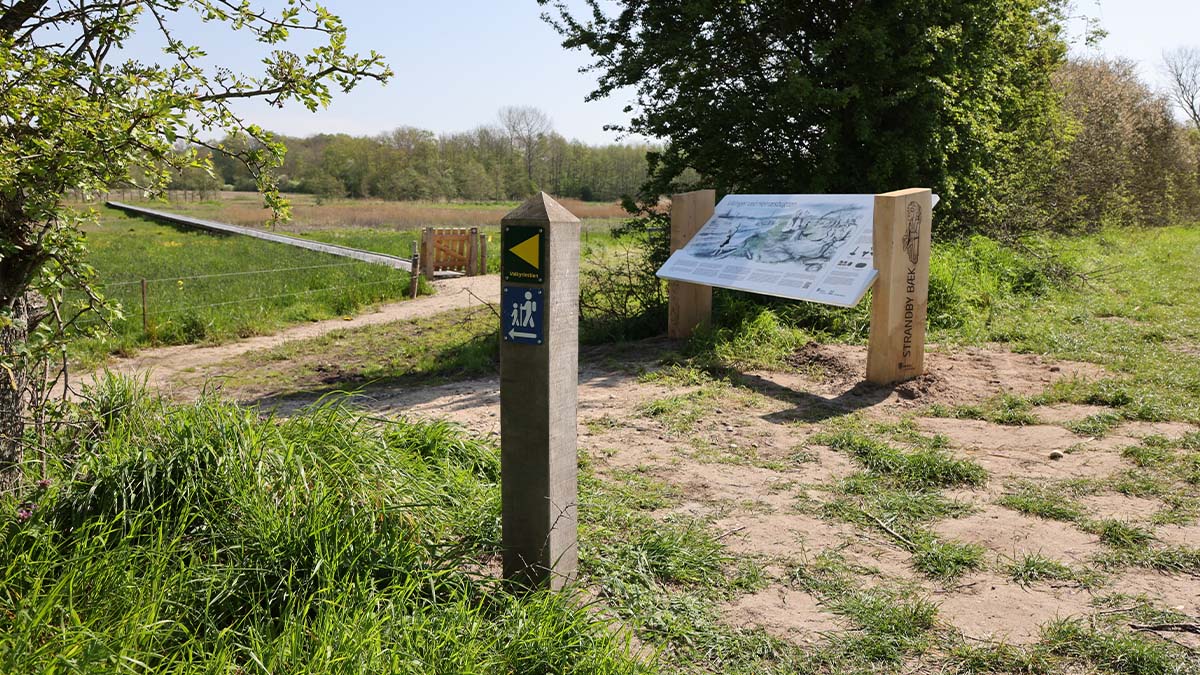
Hiking trail: Valkyriestien
Valkyriestien at Strandby Bæk
Valkyriestien is marked in yellow.
The trail partially runs parallel to Lillebæltstien Øst, see pages 10 and 11. The trail runs in the wetland area at Strandby Bæk in Haarby. Bring your binoculars and observe birds at the picnic house, and spend the night in the shelter.
- Length: 1.2 km.
- Terrain: It is an easy hike suitable for most hikers. The trail is a dirt path and can be uneven and muddy at times. The trail is not suitable for strollers and wheelchairs.

The Wetland Area
The area is established through the wetland arrangement, a state support scheme aimed at reducing nitrogen leaching into the sea by restoring the natural water cycle.
Over time, the area will change in character and become a mosaic of wet and dry zones, creating valuable nature and favorable conditions for both plants and animals. Small ponds have been established in the terrain to create wet habitats for amphibians and insects.
The wetland area covers a total of 30 hectares and retains approximately 3 tons of nitrogen annually.
In the southern part of the wetland area, there is an opportunity to spend the night in a shelter. The shelter site, which consists of a shelter, campfire site, and composting toilet, is located in connection with Valkyriestien.
History dating back to the Viking Age
Valkyriestien is named after the area's highly mythical significance for the Vikings who, from around the year 600-1000, are believed to have resided right here.
From villages in the hinterland, the Vikings sailed to Helnæs Bay in periods to participate in the work of building and maintaining longships that were to go on trading and war expeditions both domestically and abroad. The work of building and maintaining the ships was demanding. Finds of nails, fittings, tools, and not least slag show that iron was forged in large quantities.
Some of the finds bring us close to the Vikings as people, for occasionally they lost personal jewelry such as glass and amber beads, bronze brooches, or an iron Thor's hammer. In a well, archaeologists found a wooden handle that was carved as a dragon's head, and in a waste layer, a clay human figure was found—perhaps a child's toy?